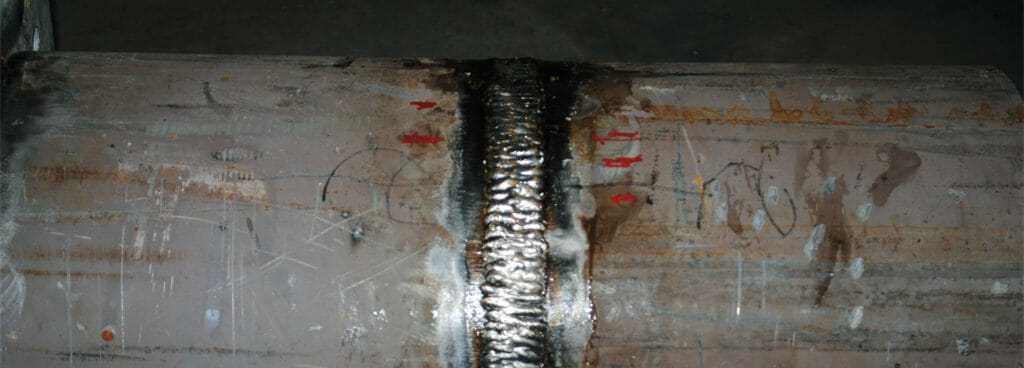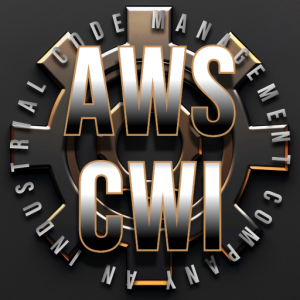Leading Tips for Effective Welding Inspection in Gilbert Arizona: A Comprehensive Guide
Wiki Article
Discovering the Importance of Welding Evaluation in Industrial Applications: Guarding Against Failings and Enhancing Long Life
Welding inspection offers as an essential line of defense in commercial applications, guaranteeing the architectural integrity and dependability of welded components. By methodically recognizing issues such as porosity and incomplete combination, assessments not only protect against failures but also prolong the life-span of essential assets.Role of Welding Examination
Welding evaluation functions as an important safeguard in industrial applications, guaranteeing that welded frameworks meet defined requirements of high quality and security. This procedure entails a systematic assessment of welds to confirm their honesty, stamina, and compliance with well-known codes and specs. The role of welding inspection is multifaceted, incorporating both visual evaluations and non-destructive screening methods, which may consist of ultrasonic, radiographic, or magnetic fragment screening.Effective welding evaluation identifies potential concerns early, alleviating the risk of catastrophic failings that can emerge from inadequate welds. By making sure that welds are carried out according to design requirements, assessors add to the total structural reliability and longevity of components in critical applications, such as stress vessels, pipelines, and structural structures.

Usual Welding Defects

Among the most prevalent problems is porosity, characterized by small gas pockets trapped within the weld steel. This occurs due to pollutants or inappropriate protecting gas, jeopardizing the weld's stamina. Another significant defect is incomplete combination, where the weld metal stops working to bond effectively with the base product, potentially bring about structural weaknesses.

Splits can additionally create throughout or after the welding process, commonly credited to thermal anxieties or inappropriate air conditioning prices. In addition, undercutting, where the base steel is deteriorated along the weld bead, can weaken the joint and is frequently brought on by extreme warmth input or incorrect strategy.
Moreover, absence of penetration occurs when the weld metal does not get to the origin of the joint, resulting in inadequate stamina. Understanding these usual problems is crucial for welders and examiners alike to ensure that welded structures satisfy security and performance requirements, inevitably stopping prospective failures in commercial applications.
Benefits of Routine Evaluations
Regular inspections offer as an important safeguard in ensuring the reliability and longevity of welded structures. These examinations determine prospective flaws and weaknesses that might endanger the honesty of welds, enabling for timely remediation before concerns rise. By carrying out a structured inspection routine, organizations can substantially lower the threat of disastrous failings that may bring about pricey downtime, devices replacement, and even crashes.
In addition, normal assessments add to improved top quality control throughout the welding process. By adhering to a consistent evaluation routine, business can ensure that their welding methods fulfill recognized quality standards and ideal practices. This not just promotes a society of liability yet additionally motivates continuous improvement among welding employees.
Furthermore, routine inspections help with better maintenance preparation. By recognizing deterioration early, companies can tactically schedule replacements and repair services, decreasing disruption to operations. This proactive technique eventually causes prolonged property life-span and boosted total performance.
Last helpful resources but not least, a commitment to routine assessments can improve a company's online reputation in the industry. Clients and stakeholders progressively worth organizations that focus on security and high quality, thereby boosting trust and potentially leading to increased organization chances.
Industry Standards and Regulations
Sticking to sector criteria and regulations is an essential element of welding inspection that complements the advantages of normal examinations. These requirements, developed by companies such as the American Welding Society (AWS) and the American Culture of Mechanical Engineers (ASME), provide a structure for best practices in welding procedures, materials, and assessment techniques. Conformity with these regulations guarantees that welds satisfy the called for high quality and safety and security standards, dramatically decreasing the risk of structural failures.Governing bodies like the Occupational Safety and Health And Wellness Management (OSHA) further enforce standards that shield employees and the setting during welding procedures. By complying with these developed requirements, markets can improve the integrity of their structures and components, ensuring they execute as intended under different functional conditions.
Moreover, adherence to market standards cultivates uniformity in quality control, assisting in smoother communication among stakeholders and regulatory agencies. This placement not only reduces responsibility dangers however additionally boosts the trustworthiness of organizations in affordable markets. Welding Inspection Gilbert Arizona. Eventually, compliance with welding criteria and policies is not just a lawful obligation; it is an essential financial investment in security, performance, and lasting functional success
Future Trends in Welding Examination
As sectors remain to advance, the future of welding evaluation is positioned to integrate advanced modern technologies that enhance accuracy and efficiency. Among one of the most significant trends is the fostering of automation and robotics in inspection procedures. Automated systems can conduct evaluations rapidly, reducing human mistake and raising throughput in making settings.Additionally, the assimilation of man-made knowledge (AI) and equipment understanding formulas will certainly allow predictive analytics, permitting real-time evaluations and aggressive upkeep. By analyzing data from previous examinations, these technologies can determine patterns that might indicate possible failures, thereby expanding the life-span of welded parts.
In addition, non-destructive screening (NDT) methods are anticipated to end up being more innovative, using tools such as drones and autonomous automobiles outfitted with cutting-edge sensing units. Welding Inspection Gilbert Arizona. These improvements will certainly boost the capacity to check hazardous or hard-to-reach areas without compromising safety
Additionally, the fad in the direction of digitalization will certainly bring about improved information administration systems that facilitate better tracking, reporting, and conformity with industry have a peek at this website requirements. In summary, the future of welding examination is defined by technical improvements that assure to significantly improve reliability, security, and operational performance in numerous commercial applications.
Verdict
In find more information final thought, welding evaluation offers a crucial function in guaranteeing the stability and durability of welded frameworks throughout numerous industrial applications. By determining issues such as porosity and insufficient blend, regular inspections play a significant role in danger reduction and high quality assurance. Adherence to industry requirements and guidelines additionally improves functional safety and security and dependability. As developments in technology remain to advance, the future of welding inspection promises boosted accuracy and efficiency, eventually adding to the longevity of vital facilities.Welding evaluation serves as a critical line of protection in commercial applications, guaranteeing the structural integrity and integrity of welded elements.Welding assessment serves as a critical safeguard in industrial applications, ensuring that bonded frameworks meet defined requirements of quality and security. Eventually, the function of welding evaluation is indispensable in promoting safety, boosting performance, and protecting financial investments in industrial facilities.
These standards, established by organizations such as the American Welding Culture (AWS) and the American Culture of Mechanical Engineers (ASME), provide a framework for best methods in welding processes, products, and evaluation strategies.In conclusion, welding inspection serves a crucial function in making certain the stability and durability of bonded structures throughout different commercial applications.
Report this wiki page